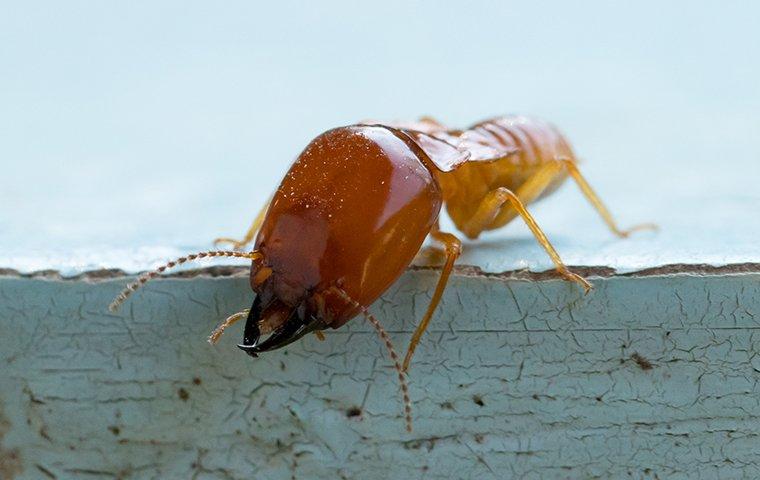When people get hungry, anything can start to seem appetizing. You have probably heard the saying, “I’m so hungry I could eat an elephant”. Despite how hungry you have been before, we know you have never looked at the walls of your home and thought, man would those be tasty? Do you know who does have these thoughts? Termites. If you are worried about termites eating your Raleigh home, we would like to help. Let’s start by talking about how you can tell if your home is actively dealing with a termite infestation.

What Are Termites?
There are over 2000 species of termites in the world, but only one that is a big threat here in Raleigh. We are talking about subterranean termites. These wood eating pests are known for building their colonies deep underground, usually near a source or sources of harvestable wood. Once established, a termite colony will begin actively gathering any suitable wood nearby. What makes wood suitable? Subterranean termites prefer wood that has been water damaged or softened by rot or decay. This could be anything from a downed tree, to a pile of wet cardboard, to the structural wood of your home.
Damage Termites Do
If termites find your home suitable for their tastes, serious damage can happen over time. What makes termites so destructive is not how fast they can damage wood, but how long they can eat a home before being noticed. Many of the homeowners we help with termite problems say they never knew there was a problem in the first place and are shocked to find out termites have been active in their home for many years.
Given enough time, noticeable signs of a termite infestation can begin to pop up. Here are a few signs that you can use to identify a termite infestation in your home.
Windows and doors becoming tighter and harder to open.
Wallpaper and paint beginning to bubble.
Floorboards and stairs getting more and more squeaky.
Walls, floors, and ceilings starting to buckle, dip, and deform.
A soft clicking noise coming from within walls and other pieces of structural wood.
Keep in mind that these signs are of a severe termite infestation. If none of these signs are visible in your home, it does not mean it is termite-free. The only way to know for certain is to let the professionals here at Pest & Termite Consultants take a look. We can perform a thorough inspection of your home and let you know if any termite threats are present, or if it is at risk of one in the future.
How To Identify And Remedy Factors That Attract Termites
The quality of your home’s wood is directly connected to its chances of a termite infestation. To make sure your home is not attracting termite problems, here are some things you can do.
Fix leaky pipes and fixtures.
Repair broken gutters and water spouts.
Eliminate sources of water build-up that could be negatively affecting your home’s wood.
Repair or replace structural wood around your home that has been softened by water damage, rot, or decay.
Make sure there is a non-wood barrier between your home's wood and exterior soil.
Avoid using wood-based mulch near your home’s exterior.
Keep firewood and lumber stored a good distance from your home’s exterior and sheltered from the elements as much as possible.
The Only Way To Know Your Home Is Termite-Free
When it comes to getting and keeping termites out of your home, there is only one solution that is guaranteed to be effective and that is letting the professionals help. At Pest & Termite Consultants we specialize in high quality and reliable termite treatments. We have what your home needs to stay termite-free year-round.
Call us today if you want to learn more about how we treat for termites, or if you would like to schedule an inspection for your Raleigh home.

